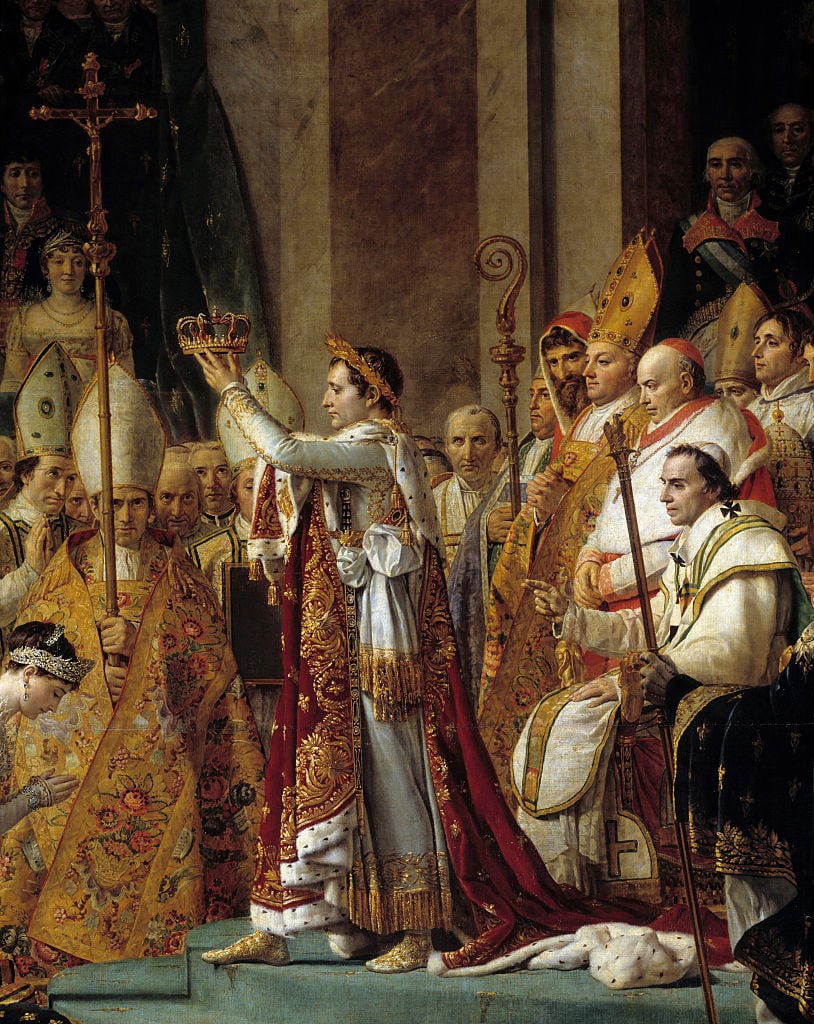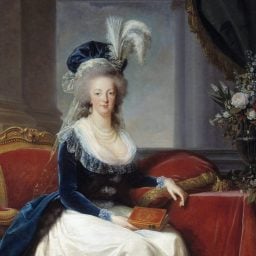In a case of movies imitating art, and art imitating life (or some jumble along those lines), Jacques-Louis David’s monumental history painting depicting the moment Napoleon Bonaparte was publicly crowned and consecrated emperor of France, appears to have served as key source material to the makers of the blockbuster film Napoleon, which premiered in theaters worldwide last week.
Ridley Scott’s major epic even includes a shot of David, Napoleon’s official court painter and propagandist par excellence, busily drawing at the scene of the coronation. With this, the film’s meticulous nod to that neoclassical masterpiece does not miss a beat: David had in fact, painted himself into the work.
Napoleon famously said the 1807 work was “not a painting, one walks into this picture” and he was not wrong. As one of the largest oil paintings hanging in the Louvre, the work, which the French have nicknamed Le Sacre (officially, it is titled The Consecration of the Emperor Napoleon and the Coronation of the Empress Joséphine in Notre-Dame Cathedral on 2 December 1804) has a life-like scale. As such, it offers viewers the uncanny sense that they are witnessing, or even attending, a defining moment in history.
In recreating the moment, David took pains to depict over 140 of the dignitaries who were present at the ceremony—as well as a few who were not, but more on that later. He spared few details of the lavish costumes, tapestries, and jewels gilding everything from the visitors to the architecturally splendid walls of Paris’s Notre Dame Cathedral on that December day. The light cascades in from above with a godlike perfection.
David, born in 1748 in Paris and died in exile in Brussels in 1825, is an intriguing historic figure; he used his paintbrush to promote the radical political views that swirled around and propped up the French Revolution. Far from a passive observer, he became a vocal, active supporter of Maximilien Robespierre’s Reign of Terror, before eventually signing on as first painter to the upstart ruler Napoleon. After studying under the Rococo painter Joseph-Marie Vien, the still-young David rejected that lighter, pastoral style of the day for the neoclassical art for which he became known, heavily inspired by Roman antiquity. He would go on to regularly draw from such themes to glorify his subjects.
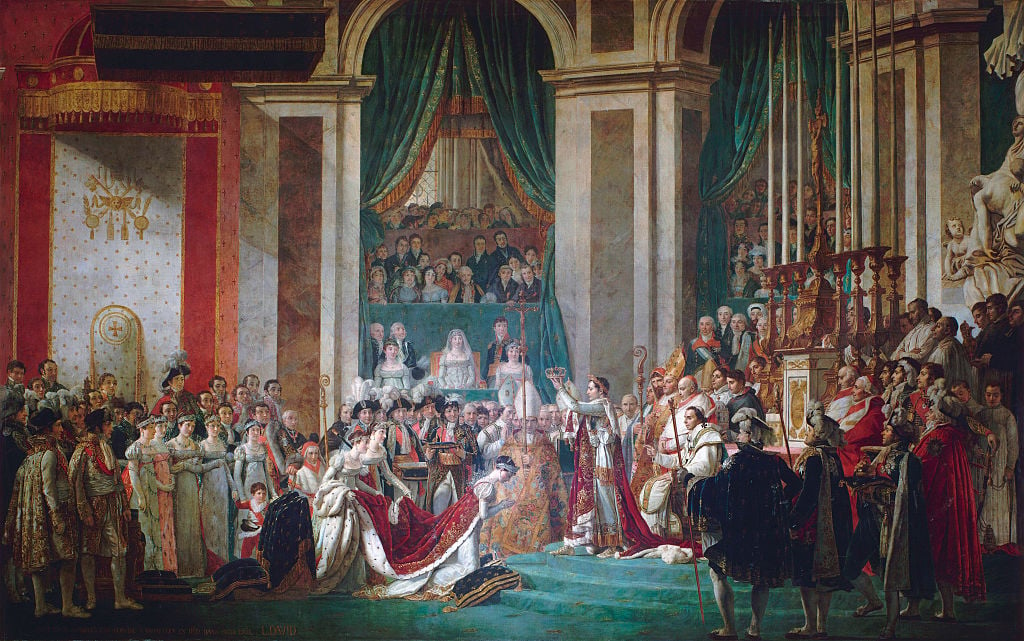
The Coronation of Emperor Napoleon I and Coronation of the Empress Josephine in Notre-Dame de Paris, (1804-1807). (Photo by VCG Wilson/Corbis via Getty Images)
Who Crowned Who?
While the painting hanging in the Louvre’s Denon wing shows Napoleon placing the crown over a kneeling Joséphine, that is not how David initially conceived it. As the film also rightly shows, in a legendary reversal of power, Napoleon first crowned himself. Traditionally, the presiding religious leader—in this case, Pope Pius VII—would have done the honors. By switching the roles, Napoleon demonstrated his supremacy over the church. David’s earlier drawings in fact show the young emperor raising one arm to crown himself. And for those lucky enough to peer closely at the original work in the Louvre, a faint outline of that self-crowning moment can be detected. The film, faithful to real life, shows Napoleon do both—crown himself while facing the crowd, rather than the Pope, and then crowning his empress. It is not clear whose idea it was to change this critical detail in David’s painting, but Napoleon was reportedly thrilled with the more gallant rendition of himself.
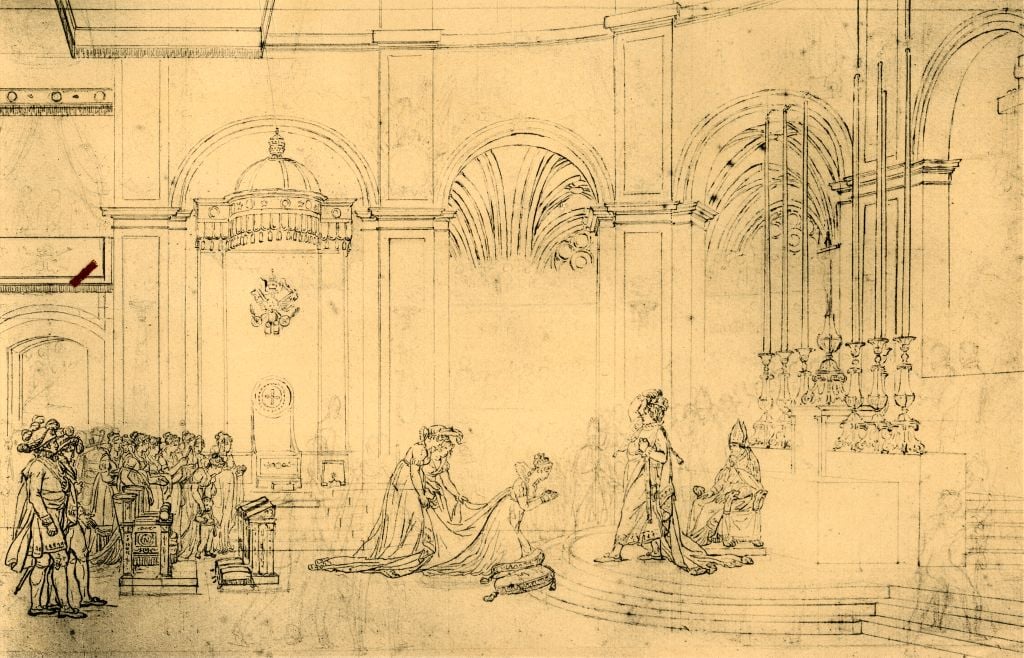
Sketch for The Coronation of Napoleon, in which the emperor crowns himself. The painting was later changed to remove this detail. (circa 1807). (Photo by The Print Collector/Heritage Images via Getty Images)
Old Fashioned Photoshop
Before photoshop, there was paint, and David used it to touch up, alter, and fabricate the scene, making it one of history’s most enduring examples of propaganda. For one, while all eyes in the painting are turned to Napoleon and his outstretched arms, crown in hand, there is another central figure who draws our gaze. That would be Napoleon’s mother, Maria Letizia Ramolina, who is given pride of place on her own mini thrown-like chair at the center of the canvas, arguably a more important position than the Pope’s, who sits somewhat hunched behind Napoleon. However, in reality, the emperor’s mother snubbed the event due to a family feud between her sons.
In addition, David made Joséphine look younger than her 41 years. Her age was something of a scandal, because she was a widow with two children, and six years older than Napoleon. Other artistic liberties included adding in a few dignitaries, such as an ambassador from Istanbul, who had in fact not been allowed into the cathedral, because he was Muslim. Though Napoleon himself was known to have said, “I like the religion of Mahomet better, it is less ridiculous than ours.” Though he was not there, at least he was a contemporary; David took an even greater liberty in painting in a man who looks incredibly similar to Julius Caesar.
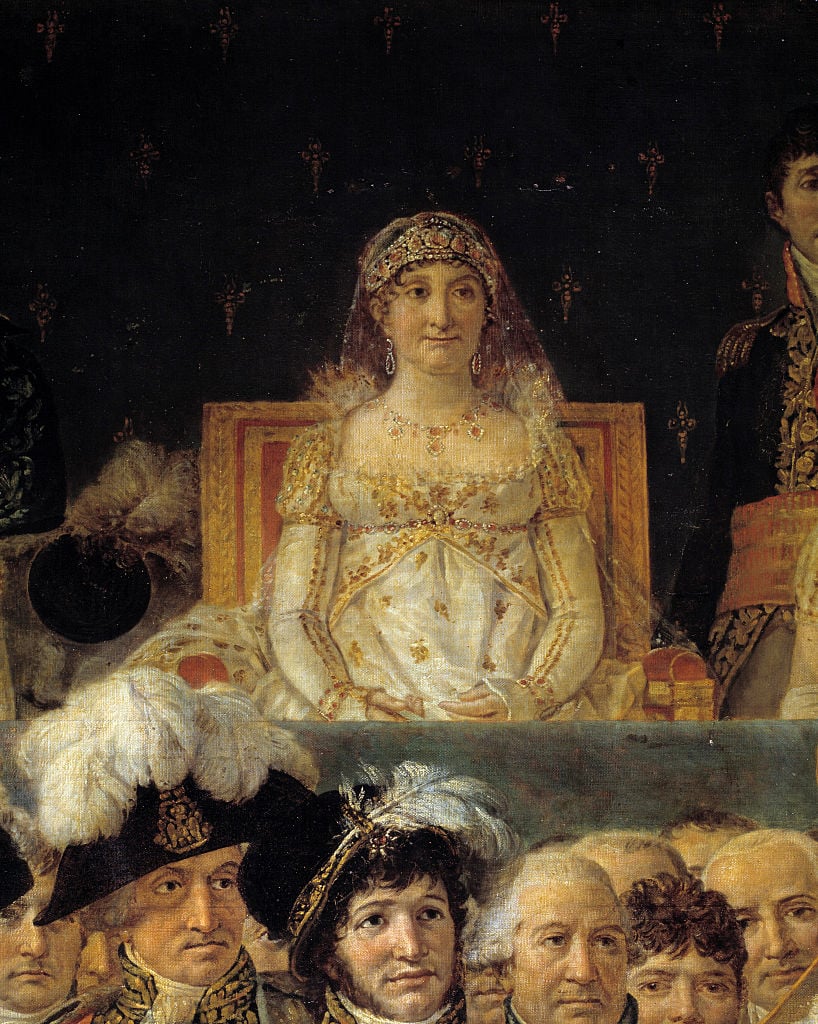
Detail representing Marie Laetitia Bonaparte (1750-1836), mother of Napoleon I during the Consecration of the Emperor Napoleon I Bonaparte and Coronation of the Empress Josephine in Notre-Dame de Paris on 2 December 1804. (Photo by Leemage/Corbis via Getty Images)
Life is a Stage
In the painting’s composition, David maintains a neoclassic symmetry, with the cathedral’s imposing, tall, vertical columns echoed in the crosses, counterbalanced by the horizontally positioned crowd. In fact, most guests face the viewer, as if on a theater stage.
Rich, red, and indigo tapestries and carpets add to the sense of a dramatic scenography, to which the viewer is offered a front-row seat. David’s heavy use of precious indigo pigment was also an immediate sign of wealth in its day, due to its high cost. According to historical accounts, the cathedral was indeed adorned with ornate tapestries made especially for the occasion, and in record time. However, one of their purposes was to hide the extensive damage to the monument caused by the French Revolution, evidence of a conflict Napoleon hoped to put behind him, and the French people.
More Trending Stories:
Masterpiece or Hot Mess? Here Are 7 Bad Paintings by Famous Artists
Who Won Auction Week? Here Are 9 Takeaways From New York’s Nearly $2 Billion Fall Sales
Kurt Cobain’s Old Jeans Just Set an Auction Record for Levi’s
Seller’s Remorse: How a Thrift Store Owner Let a $191,000 Painting Slip Through His Fingers for $4
A Prankster Used A.I. to ‘Improve’ Edward Hopper’s Classic ‘Nighthawks’
Chinese Artist Chen Ke Celebrates the Women of Bauhaus in a Colorful, Mixed-Media Paris Debut
A Centuries-Spanning Exhibition Investigates the Age-Old Lure of Money
Meet the Woman Behind ‘Weird Medieval Guys,’ the Internet Hit Mining Odd Art From the Middle Ages
